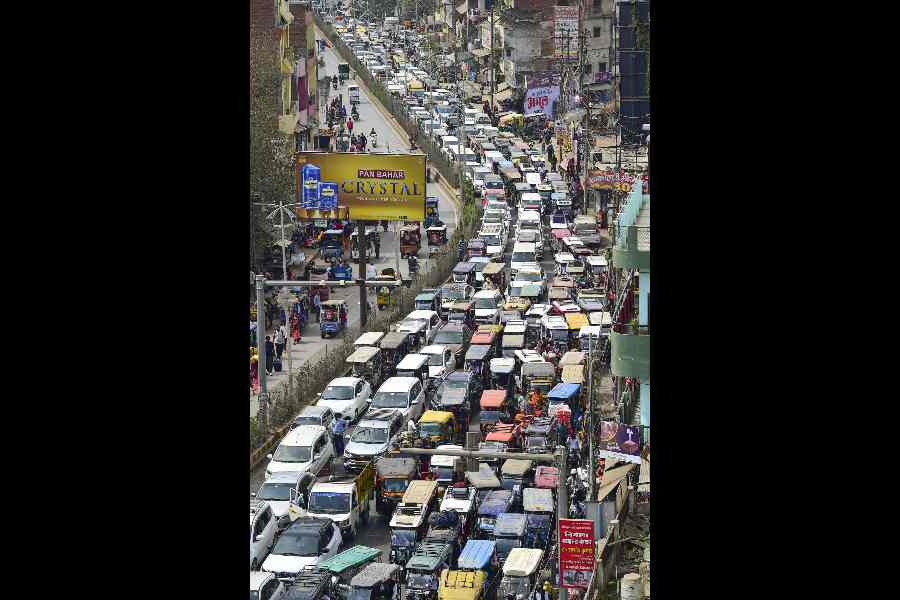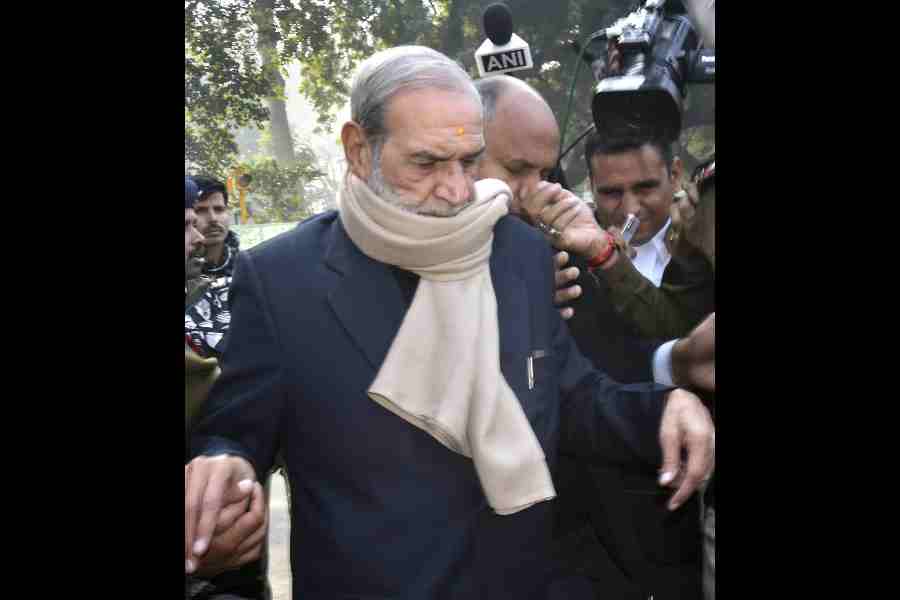The coronavirus has slipped into 52 new districts across the country over the past 10 days, spreading even under what health officials and epidemiologists have described as an effective lockdown that has slowed transmission.
The number of Covid-19-affected districts had increased to 429 on Sunday from 377 districts — 170 hotspots and 207 with fewer cases — listed by the Union health ministry on April 15.
The health ministry on Sunday recorded 1,975 new Covid-19 cases — a fresh highest-ever overnight spike — raising the total number of patients at 5pm on Sunday to 26,917.
But evidence that local health authorities and communities can keep the virus at bay through standard public health measures — testing, isolation, quarantine and physical distancing — is also growing.
Eighteen districts have not reported a new Covid-19 case for over 28 days, 33 districts have not reported a case for 21 days, 48 districts have not reported a case for 14 days, and 64 districts have not reported a case for seven days.
A week away from May 3 when India is expected to begin its transition out of the 40-day lockdown, The Telegraph asked health experts to share their views about the gains achieved through the lockdown and what India could expect to see in the weeks to come. The questions dealt with only the health situation and not the economic and social costs.
- What has been the biggest gain or achievement from the lockdown?
The lockdown has saved lives. No one can put a count on how many but calculations by the Indian government and independent epidemiologists suggest that without the lockdown, India could have had over 100,000 Covid-19 cases by now instead of under 30,000.
The lockdown has also helped India build and organise a network of isolation centres, hospitals and critical care facilities for Covid-19 patients.
Given how easily the infection spreads, there was a need to create dedicated Covid-19 facilities. Over the past month, according to Union health ministry figures, the country has established more than 190,000 isolation beds with oxygen support, 24,000 intensive care beds and over 12,000 ventilators.
- Is that inventory of beds and ventilators enough?
For now, yes. In the weeks or months to come, it would depend on the pace of resurgence of the infection. Among the 20,177 Covid-19 patients in hospital on Sunday, according to figures released by the health ministry, 2.17 per cent (438) are in intensive care units, 1.29 per cent (260) have required oxygen support, and only 0.36 per cent (73) have required ventilator support.
Doctors and public health experts say the efforts in the coming weeks should be aimed at minimising the flow of patients who require ICU or ventilators. The elderly who are at higher risk of severe Covid-19, for instance, need to protect themselves in the coming weeks and months.
It is widely expected that guidelines in the post-lockdown period would call on the elderly to stay home and even keep physical distance from others at home. “The primary objective of the inventory and such measures would be to ensure that ICU and ventilator care are always available to whoever needs them,” said a critical care specialist.
- What happens after May 3? Will there be a resurgence of the infection?
Public health experts say this will depend entirely on how quickly the government relaxes restrictions.
“The whole country is waiting, but we just can’t afford an abrupt opening up of everything,” said Pankaja Raghav, professor of community medicine at the All India Institute of Medical Sciences, Jodhpur.
“The lockdown has helped prevent what could have been a disaster — but people are still susceptible to the virus. We have to continue to try and slow down its spread until herd immunity is achieved,” she said.
Herd immunity is a condition in which so many people have acquired immunity to the virus — either through the infection or a vaccine — that they themselves pose a barrier to its spread. After herd immunity is achieved, only sporadic Covid-19 cases will turn up.
- Are there projections about how patients’ counts will rise in the days and weeks after May 3?
A forecast by Shankar Reddy, a community medicine specialist in Andhra Pradesh, suggests that India could have around 33,000 cases by May 3.
The numbers beyond that date would depend on the opportunities the virus gets to spread from person to person.
The impact of relaxing the restrictions, experts say, would likely be visible from around 14 days after May 3, the incubation period of the virus.
- What are the options before the government, post-May 3?
A national task force that includes doctors and health experts is examining options of phased or staggered opening up of the economy depending on the status of infections and healthcare system readiness. Hotspot districts with large outbreaks or multiple clusters are likely to remain under significant restrictions.
- What should we do as individuals if some restrictions are eased after May 3?
Wear cloth face-covers every time people leave their homes, adopt physical distancing measures, wash hands and rigorously adhere to respiratory etiquette. “People with any respiratory symptoms should stay home. This should ideally be mandatory, though difficult to implement,” Reddy said.
- Does anyone know the true burden of Covid-19 in India?
No. Neither the government nor some of the experts who have suggested that the actual number could be much higher than the current counts of less than 30,000.
The experts point to India’s relatively low levels of testing and death numbers and contend that the true burden is much higher.
Health officials, however, point out that the country has significantly expanded testing — 16 per million on March 23 to 380 per million on April 25 — over the past month. Yet, the proportion of people tested positive has not increased but is steady around 4.5 per cent among those tested.
Vinod Paul, a senior paediatrician and member of the national task force, has said there is “absolutely” no evidence to suggest that the true burden is much higher. Paul says the country’s surveillance system has not seen any spikes in pneumonia or fevers or demand for intensive care unit beds in hospitals.
Drug sales analysis also does not reveal any increase in the consumption of medicines for fever or cough — likely to be taken or prescribed for Covid-19-like symptoms. “There is no evidence for any undercurrent — there may be some scope for minor refinements, but what we are presenting is the true picture of the epidemic in the country,” Paul had said earlier this week.










